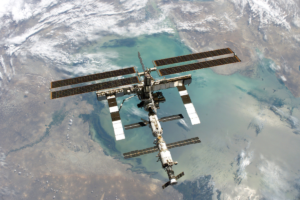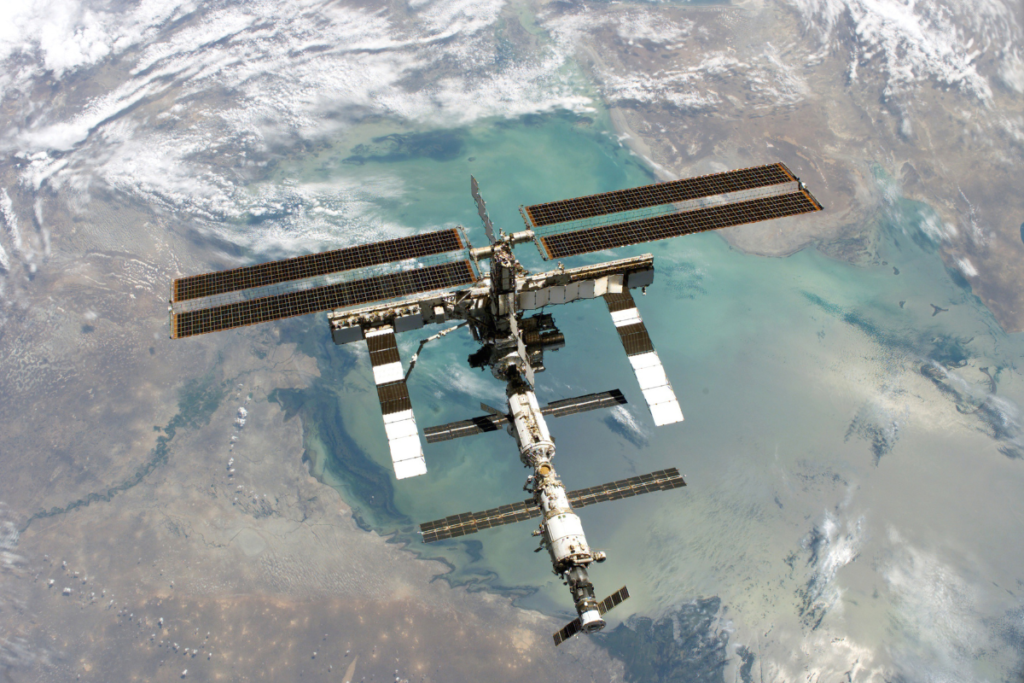Introduction
Have you ever gazed up at the night sky and wondered how satellites manage to stay up there for so long, seemingly floating around the Earth without any visible means of support? It’s a question that many people have, and the answer lies in a combination of gravity, speed, and a bit of orbital magic! Satellites, both natural and artificial, are vital for everything from communication and GPS navigation to weather forecasting. So, what really keeps a satellite in orbit, and how does it stay up there without falling back down to Earth? Let’s dive in and explore the fascinating science behind it!
The Basics of Satellites
First, let’s get a handle on the basics. A satellite is any object that orbits around a larger object. In our case, when we talk about satellites, we’re usually referring to the man-made ones that circle the Earth. However, the Moon is also a satellite—just a natural one. There are two types of satellites: natural satellites, like moons, and artificial satellites, which are the ones we launch into space for various purposes.
How Do Satellites Stay in Orbit?
Here’s where it gets interesting. The two main forces that allow a satellite to stay in orbit are gravity and inertia. Gravity pulls the satellite toward Earth, while its forward motion, or momentum, keeps it moving around the planet. These forces create a delicate balance, allowing the satellite to stay in a constant orbit rather than plunging back to Earth or flying off into space.
The Role of Gravity and Inertia
Gravity is pulling the satellite toward the Earth, but the satellite also has inertia—that is, it wants to keep moving in a straight line. The result is that the satellite is constantly falling toward Earth due to gravity, but it’s moving forward so fast that it keeps missing the planet. Imagine throwing a baseball; if you throw it hard enough, it will travel far before it hits the ground. Now, if you could throw it fast enough (about 28,000 km/h!), it would keep falling around the Earth, never hitting the ground. That’s essentially what satellites do!
Understanding Orbital Mechanics
To understand how satellites orbit the Earth, you need to grasp orbital mechanics. A satellite stays in orbit because of its orbital velocity, which is the speed it needs to counteract the pull of gravity. This creates a circular or elliptical path around the Earth. The satellite’s speed is key—too slow, and it falls back to Earth; too fast, and it shoots off into space.
What Is Orbital Velocity?
Orbital velocity is the speed a satellite needs to maintain to stay in orbit. For satellites close to Earth (in low Earth orbit), this speed is around 28,000 kilometers per hour. The further out a satellite is, the slower it can go and still remain in orbit because the pull of gravity weakens with distance.
Newton’s Laws and Satellites
Let’s talk about the science behind it. Newton’s First Law of Motion—that an object in motion stays in motion unless acted upon by an external force—explains why satellites don’t just fall out of the sky. The satellite’s inertia keeps it moving, while gravity provides the force that keeps it from flying off into space. Then there’s Newton’s Law of Universal Gravitation, which explains that every object in the universe attracts every other object. The Earth’s gravity is what holds satellites in orbit.
The Importance of Velocity
One of the key factors in keeping a satellite in orbit is its velocity—how fast it’s moving. A satellite has to travel fast enough to counteract the pull of gravity. If its velocity is too low, gravity will win, and the satellite will fall back to Earth. If it’s too high, the satellite will escape Earth’s gravitational pull and drift off into space. It’s all about finding the perfect balance.
How Fast Does a Satellite Need to Go?
For a satellite to stay in a low Earth orbit (LEO), it needs to travel at roughly 28,000 km/h. That’s fast enough to counteract the Earth’s gravity but not so fast that it escapes into space. The higher the orbit, the slower the satellite can travel because gravity’s pull weakens as distance from Earth increases.
Types of Satellite Orbits
Not all satellites orbit at the same height or speed. Depending on their mission, satellites may be placed in low Earth orbit (LEO), geostationary orbit (GEO), or high Earth orbit (HEO).
- Low Earth Orbit (LEO): Satellites here are usually used for imaging, weather tracking, or space station missions, orbiting between 160 and 2,000 kilometers above Earth.
- Geostationary Orbit (GEO): Satellites in this orbit stay in a fixed position relative to the Earth’s surface, perfect for communication and weather satellites. They orbit about 35,786 kilometers above the Earth.
- High Earth Orbit (HEO): These satellites are further out, used for deep-space missions and high-level scientific research.
Why Do Different Orbits Exist?
Different orbits exist because satellites serve different purposes. Low Earth Orbit is great for weather satellites or imaging because they’re close to the Earth and can capture detailed pictures. Geostationary Orbit is ideal for communication satellites because they can cover a large area of the Earth continuously. High Earth Orbit is used for space research or satellites that need to monitor far distances.
Do Satellites Need Fuel to Stay in Orbit?
Here’s something surprising—once in orbit, satellites don’t need fuel to stay there! Unlike cars or planes, there’s no air resistance in space to slow them down. The vacuum of space means that once they reach their desired speed, they just keep going. That said, satellites do have small thrusters to make minor adjustments to their position or orientation.
Momentum vs. Air Resistance in Space
In space, there’s no air to create drag or slow things down. A satellite in motion will stay in motion because there’s nothing to stop it—this is due to the lack of air resistance. Its momentum keeps it moving forward while gravity keeps it from flying off into space.
The Role of Thrusters for Minor Adjustments
Although satellites don’t need fuel to maintain their orbit, they do have small thrusters to make tiny course corrections. These are used to keep the satellite in its precise orbit, avoid collisions, or adjust its position as needed.
#BrightestStar #AIBookEditing #AiAudienceTargeting #SatellitesWithoutFuel
The Concept of Freefall
You might be surprised to learn that satellites are technically always in freefall. They’re constantly falling toward the Earth but moving fast enough sideways that they keep missing it! This is why satellites don’t fall out of the sky—they’re falling around the Earth in a continuous loop.
How Satellites are Always Falling But Never Hitting the Ground
Think of a satellite as a super-fast car driving around the rim of a giant bowl. It’s constantly being pulled toward the center (Earth’s gravity), but it’s going fast enough that it keeps circling around without hitting the bottom. That’s the essence of satellite orbits!
What Happens When Satellites Lose Their Orbit?
When a satellite loses the delicate balance of speed and gravity, it experiences orbital decay. This can happen due to atmospheric drag or other forces, and it leads to the satellite slowly spiraling closer to Earth until it either burns up in the atmosphere or crashes back down.

Orbital Decay Explained
Satellites in low orbits can lose speed over time due to atmospheric drag, which causes them to fall out of orbit. This process, known as orbital decay, eventually leads to re-entry into Earth’s atmosphere, where most satellites burn up.
Atmospheric Drag: How Satellites Eventually Fall
For satellites in low Earth orbit, there’s still a tiny amount of air present, which creates drag. This drag slows the satellite down over time, causing it to lose altitude and eventually re-enter the Earth’s atmosphere, where it usually burns up.
How Are Satellites Launched?
Satellites are launched into orbit using rockets. These powerful vehicles carry the satellite up into space and provide it with the speed it needs to reach orbit. Once the satellite reaches the right altitude and speed, it’s released from the rocket and begins its orbit around the Earth.
The Importance of Rockets and Launch Vehicles
Rockets provide the immense speed and power needed to launch a satellite into orbit. They carry satellites into space and set them on their journey around the Earth. Without rockets, satellites wouldn’t be able to reach the speeds necessary to achieve orbit.
Achieving the Right Speed for Orbit
Getting a satellite into orbit is all about speed. The rocket must propel the satellite fast enough to reach orbital velocity. Once the satellite reaches this speed, it can maintain its orbit without additional fuel.
The Future of Satellites
As technology advances, so does satellite propulsion. Electric propulsion and ion thrusters are some of the cutting-edge technologies that could shape the future of satellites. These new propulsion systems use much less fuel, allowing satellites to stay in orbit for longer periods.
Electric Propulsion and Ion Thrusters
Unlike traditional thrusters, electric propulsion systems, such as ion thrusters, are more efficient. These engines use electricity to accelerate ions, providing a gentle but continuous push that can help satellites stay in orbit longer and maneuver more effectively.
Satellites and Their Increasing Role in Space Exploration
Satellites are playing an increasingly vital role in space exploration. From monitoring Earth’s environment to helping us understand the universe, they’re essential to our ongoing exploration efforts. In the future, satellites will likely continue to evolve, helping us travel further into space and providing valuable data for scientific discovery.
Conclusion
So, what keeps a satellite in orbit? It’s a delicate dance between gravity and speed—a cosmic balancing act that allows satellites to circle the Earth without falling back down. By understanding orbital mechanics, velocity, and the forces at play, we can keep satellites in orbit for years, providing us with vital services and insights into the universe. With advancements in technology, the future of satellite exploration looks brighter than ever!
FAQs
- What is the difference between a natural and an artificial satellite?
Natural satellites, like the Moon, orbit planets naturally, while artificial satellites are man-made and launched into space for specific purposes. - How long can a satellite stay in orbit?
Some satellites can stay in orbit for decades, depending on their altitude and the maintenance they receive. - Why don’t satellites fall out of the sky?
Satellites stay in orbit due to a balance between their forward momentum and the gravitational pull of Earth. - Can satellites collide with each other?
While rare, satellites can collide in space. To avoid this, satellite operators monitor their positions and adjust their orbits as necessary. - Do all satellites eventually come back to Earth?
Most satellites will eventually experience orbital decay and fall back to Earth, either burning up in the atmosphere or being guided to a controlled re-entry.


